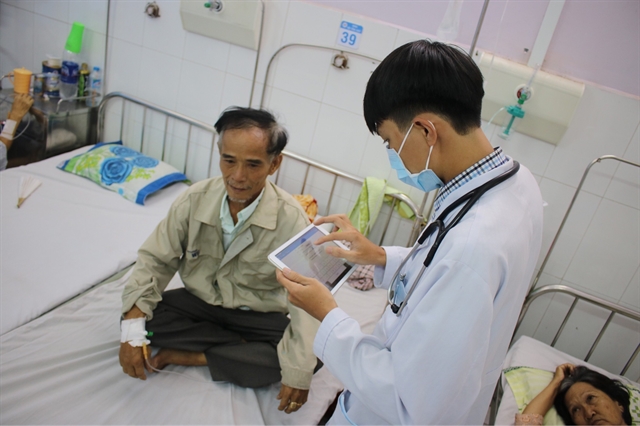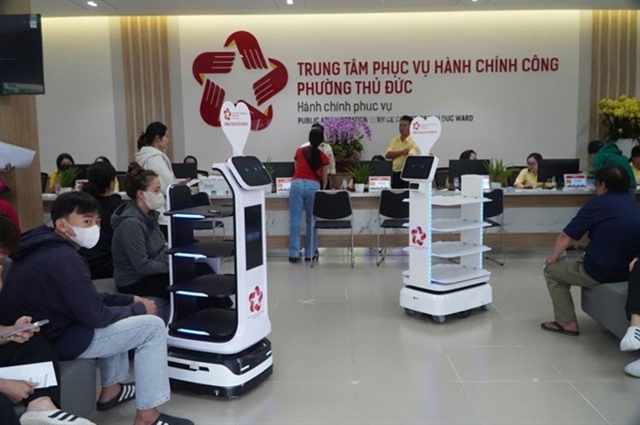 Society
Society

The health sector in recent years has increasingly used information technology, leading to positive changes in all medical activities, including the management of health-service abuse.

|
| A doctor in Thủ Đức District in HCM City checks the electronic medical records of a patient. — VNA/VNS Photo: Đinh Hằng |
HCM City – The health sector in recent years has increasingly used information technology, leading to positive changes in all medical activities, including the management of health-service abuse.
Professor Trần Quý Tường, general director of the Agency of Information Technology under the Ministry of Health, said that 100 per cent of hospitals nationwide are using a hospital management information system, and that 10 hospitals and one clinic are using electronic medical records instead of paper.
Some hospitals in Hà Nội, Đà Nẵng and HCM City are using social media for patient interactions.
Electronic medical records for patients and cloud computing applications are also being used in Nghệ An, Tiền Giang and Kon Tum provinces.
Tường said that each hospital needs an average of six months to complete its electronic medical record software, which could cost up to more than US$6 million. But most hospitals already have a basic technical foundation and only have to spend VNĐ20-30 billion ($868,502-1.3 million) on average.
Ten out of 1,400 hospitals nationwide have successfully adopted electronic medical records.
Electronic medical records can help detect common health-service abuse, including unnecessary scheduling of high-tech tests as well as health centres' refusal to take health insurance and demand that patients pay the bill.
By 2025, 15 per cent of hospitals nationwide are expected to be using electronic medical records and cashless payment services under the National Health Digital Transformation Programme.
According to Tường, most hospitals have also installed Laboratory Information System. When patients are transferred between medical facilities, the system ensures that there is no abuse in test results.
Linked data also allows hospitals to monitor patients’ examinations, treatments and test results, from which adequate introductions and referrals can be given.
Trillions of đồng saved
"There are 23 hospitals nationwide that also have picture archiving and communication systems (PACS). This avoids the cost of printing films and reduces the cost of diagnostic imaging services," Tường added.
Each year, Việt Nam spends about VNĐ4 trillion ($173.7 million) on films. Thanks to PACS, patients can save money because the scans are stored in the system.
The health sector plans to apply digital technology to most of its activities and services, forming a smart health system with smart prevention; smart medical examination and treatment; and smart medical administration. – VNS



.jpg)
